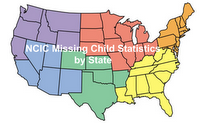Is an Amber Alert still effective if it is issued over nine hours after an abduction?
According to the Colorado Bureau of Investigation one of the purposes for issuing an Amber Alert is to rapidly disseminate information.
Is it effective if it is activated and de-activated during the search efforts?
Multiple Amber Alerts have been issued recently in the efforts to recover Daniel Jimenez, and Elian Majano both still missing. They were also issued multiple times in the abduction of Destiny Norton.
Amber Alert Process
Once law enforcement has been notified about an abducted child, they must first determine if the case meets the AMBER Plan criteria:
The child must be 17 years of age or younger
The child must be in immediate danger of serious bodily harm or death
There must be enough descriptive information to believe a broadcast will assist or aid in the recovery
The activation must be requested by a local local law enforcement agency or AMBER Designee from another state.
To rapidly disseminate information about a suspect and child to law enforcement agencies and the public when a child has been abducted
To gain the assistance of thousands of television viewers and radio listeners throughout the coverage area
To coerce the kidnapper to release the child for fear of arrest
To deter persons from commiting the crime





